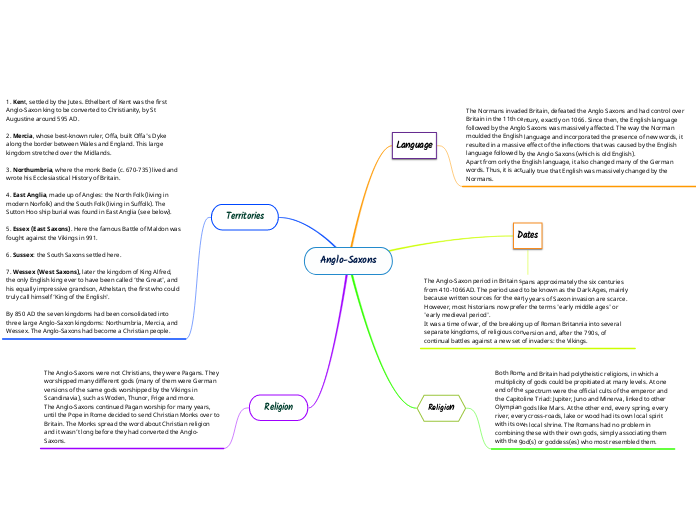
The Normans invaded Britain, defeated the Anglo Saxons and had control over Britain in the 11th century, exactly on 1066. Since then, the English language followed by the Anglo Saxons was massively affected. The way the Norman moulded the English language and incorporated the presence of new words, it resulted in a massive effect of the inflections that was caused by the English language followed by the Anglo Saxons (which is old English).
Apart from only the English language, it also changed many of the German words. Thus, it is actually true that English was massively changed by the Normans.
Poetry
Three poems give excellent insights into the Anglo-Saxons:
The Ruin, an anonymous poem written about the ruin and decay of a Roman town (see lesson plan and resources on The end of Roman Britain - the poem text is available via the 'resources' attachment)
Beowulf, about the great hero who fought and killed the monster Grendel and his mother, became a great king and met his death fighting an enraged dragon. There are several versions of the poem for children, as well as a cartoon film. Rosemary Sutcliff's version is excellent.
The Battle of Maldon, about the Saxons' heroic defence against a force of raiding Vikings in Essex.
The Anglo-Saxon period in Britain spans approximately the six centuries from 410-1066AD. The period used to be known as the Dark Ages, mainly because written sources for the early years of Saxon invasion are scarce. However, most historians now prefer the terms 'early middle ages' or 'early medieval period'.
It was a time of war, of the breaking up of Roman Britannia into several separate kingdoms, of religious conversion and, after the 790s, of continual battles against a new set of invaders: the Vikings.
Both Rome and Britain had polytheistic religions, in which a multiplicity of gods could be propitiated at many levels. At one end of the spectrum were the official cults of the emperor and the Capitoline Triad: Jupiter, Juno and Minerva, linked to other Olympian gods like Mars. At the other end, every spring, every river, every cross-roads, lake or wood had its own local spirit with its own local shrine. The Romans had no problem in combining these with their own gods, simply associating them with the god(s) or goddess(es) who most resembled them.
1. Kent, settled by the Jutes. Ethelbert of Kent was the first Anglo-Saxon king to be converted to Christianity, by St Augustine around 595 AD.
2. Mercia, whose best-known ruler, Offa, built Offa's Dyke along the border between Wales and England. This large kingdom stretched over the Midlands.
3. Northumbria, where the monk Bede (c. 670-735) lived and wrote his Ecclesiastical History of Britain.
4. East Anglia, made up of Angles: the North Folk (living in modern Norfolk) and the South Folk (living in Suffolk). The Sutton Hoo ship burial was found in East Anglia (see below).
5. Essex (East Saxons). Here the famous Battle of Maldon was fought against the Vikings in 991.
6. Sussex: the South Saxons settled here.
7. Wessex (West Saxons), later the kingdom of King Alfred, the only English king ever to have been called ‘the Great', and his equally impressive grandson, Athelstan, the first who could truly call himself ‘King of the English'.
By 850 AD the seven kingdoms had been consolidated into three large Anglo-Saxon kingdoms: Northumbria, Mercia, and Wessex. The Anglo-Saxons had become a Christian people.
The Anglo-Saxons were not Christians, they were Pagans. They worshipped many different gods (many of them were German versions of the same gods worshipped by the Vikings in Scandinavia), such as Woden, Thunor, Frige and more.
The Anglo-Saxons continued Pagan worship for many years, until the Pope in Rome decided to send Christian Monks over to Britain. The Monks spread the word about Christian religion and it wasn’t long before they had converted the Anglo-Saxons.